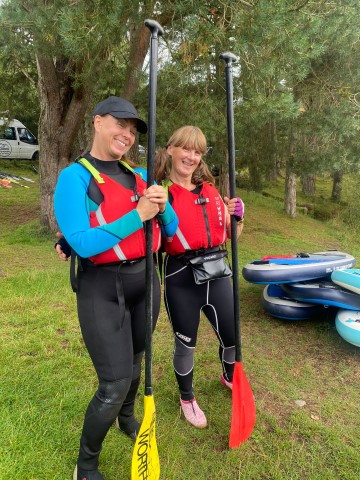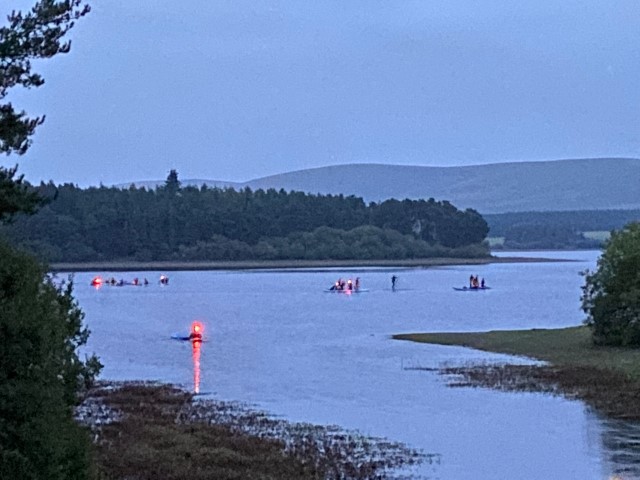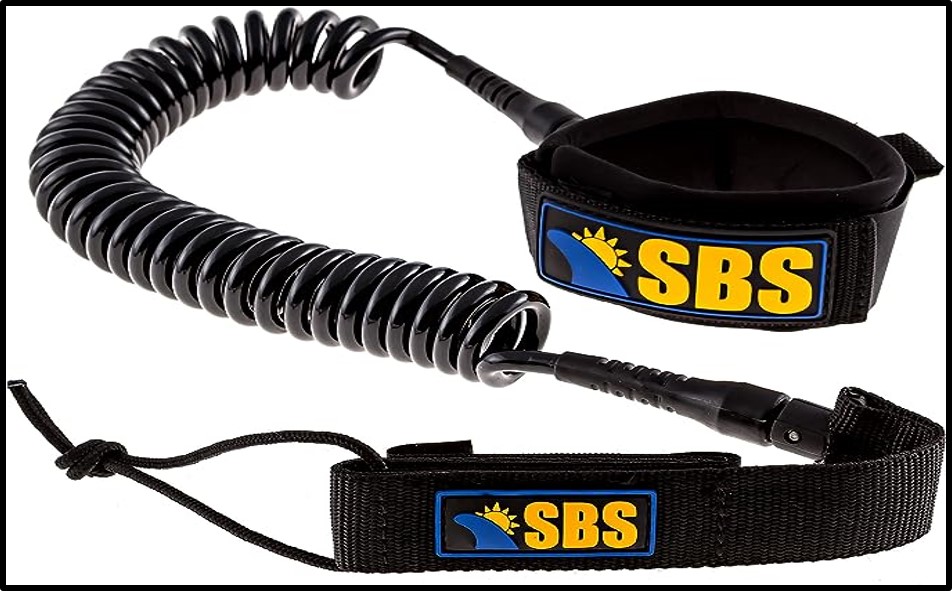There is no doubt that Paddleboarding is an excellent fun activity, that can be enjoyed by the whole family. The fact is however, like any water-based activity there is an inherent danger if proper safety measures are not followed.
This statement should not alarm you in any way, or cause you to consider paddleboarding dangerous per se. Keeping yourself (and others) safe while involved in any water sport should always be a matter of priority.
With that in mind, there are a few safety rules to follow, even before you get onto the water, that will ensure you have a fun, trauma-free day ahead of you as you go on your paddleboarding adventure.
Essential Safety Gear for SUP
Floatation Devices:

This has to be a top priority, even if you are a competent swimmer. You must consider why you have ended up in the water to begin with, as this is not part of the plan!
Not meaning to be alarmist here…But perhaps you have ended up in the water because of a medical emergency and are unconscious in the water. You may be paddling serenely up a river only to be knocked unconscious by a low-lying branch of a tree!
That aside. You might be caught-out by a sudden change in weather conditions whilst you are far from shore, and be in danger of falling into rough seas.
Scary as these scenarios sound, they do highlight the need for some kind of personal floatation device (PFD )or even a life jacket.

What’s the difference between a PDF and a Life Jacket? A life Jacket is designed to flip you face upwards when you are in the water, whilst a PFD is simply designed to keep you afloat – which in a ‘worst-case scenario’ could leave you floating unconscious face-down in the water!
As you may have guessed Life Jackets are usually more expensive than PFD’s – which most likely explains why they are the choice of most Paddleboarders.
As with many financial decisions in life, there is usually a ‘trade-off’ or other points to consider before making any purchase.
Keep in mind also that there are PFD’s for dogs also. Even if your dog is an excellent swimmer, it is definitely a good idea to consider a floatation device for them also.
SUP Leash:
Do you really need an SUP leash? ABSOLUTELY! Make no mistake, not attaching yourself to you paddleboard is dangerous not only to yourself, but to others also.
The fact is that if you do go overboard, especially in rough conditions, and you are not connected via your safety leash, you will soon find yourself many yards away from your Board.
This is not a good thing!
Soon your Paddleboard or indeed your inflatable kayak, can be blown into the path of other paddlers, perhaps causing them harm, and you could be struggling for your life!
This simple SUP leash is especially designed to connect you to your Paddleboard via your ankle, and will ensure that even if you fall off, you will still be connected and able to return to the board no problem.
Consider this…The Paddleboard itself is a giant floatation device that will not sink even in grim conditions.
A Kayak for example can sink to the bottom and be lost to you. Not so the Inflatable Paddleboard. You definitely want to make sure that you do not lose your board should you fall off while SUPing (Stand up Paddleboarding) Your life may well depend on it!
SUP leashes come in 2 main types. A coiled leash and a straight line leash. It really is a matter of personal choice but generally a coiled leash will take up less space and perhaps not create so much of a ‘trip hazard’ overall.
Safety Whistle:
Sound can travel huge distances over water, so it is a great idea to have a safety whistle to hand if you need to attract attention. Most life jackets will have them already attached, but if not, be sure to have a whistle within reach.
Flashlight:
Another often overlooked aspect of Paddle board safety is the humble flashlight. The LED lights can be very small and extremely powerful. Not only will these lights help you find your way down a dark river, but the strobe version of the light will get attention over a large body of water should you find yourself I a dire situation after sundown.

Is it dangerous to paddleboard alone?
Personally I believe it is a lot more sensible to go paddleboarding with a companion – it just makes common sense.
Whilst I do acknowledge the fact that part of the attraction is simply time spent alone with just you and the beauty of nature. Nevertheless if there is any kind of a problem – it is usually a LOT harder to deal with on your own!
You could apply this same principle to any number of activities, indoor or outdoor.
So whilst I believe it is no more dangerous to paddle alone than it is with company, it can certainly lead to problems – especially for the beginner – should you need help in times of need.
Recent Posts
Our latest Paddleboard adventure comes mainly thanks to driftwoodadventures! They kindly arranged the whole thing for us - which is important to us especially, as we were not sure of the...
What Fitness Level Do I Need For Stand Up Paddleboarding (SUP)?
Stand-Up Paddleboarding (SUP) is a fantastic water sport that has grown significantly in popularity in recent years. It's a fun and accessible activity that allows you to enjoy the outdoors and get...
